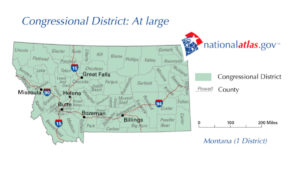How Trump Could Lose the Election—And Still Remain President | Opinion
July 3, 2020 | Tom Rogers and Timothy E. Wirth | Newsweek
It is increasingly looking as if Joe Biden can beat President Donald Trump in November. The president seems more and more out of step with the national mood, from his handling of the pandemic to his response to racially biased policing, not to mention a wide array of other issues. Even in key swing states, Trump is losing ground that will be difficult for him to make up.
For Trump, there are two broad pathways to maintaining power. …
It is increasingly looking as if Joe Biden can beat President Donald Trump in November. The president seems more and more out of step with the national mood, from his handling of the pandemic to his response to racially biased policing, not to mention a wide array of other issues. Even in key swing states, Trump is losing ground that will be difficult for him to make up.
For Trump, there are two broad pathways to maintaining power. First, we can already see very clearly a strategy designed to suppress voter turnout with the purging of registration rolls of large numbers of mostly urban voters; efforts to suppress mail-in ballots, which are more necessary than ever, given COVID-19; a re-election apparatus that is training 50,000 poll watchers for the purpose of challenging citizens’ right to vote on Election Day; and significant efforts to make in-person voting in urban areas as cumbersome as possible in order to have long lines that discourage people from exercising their voting rights.
The second pathway to subverting the election is even more ominous—but we must be cognizant of it because Trump is already laying the groundwork for how he can lose the popular vote, and even lose in the key swing states necessary for an Electoral College victory, but still remain president.
This spring, HBO aired The Plot Against America, based on the Philip Roth novel of how an authoritarian president could grab control of the United States government using emergency powers that no one could foresee. Recent press reports have revealed the compilation by the Brennan Center at New York University of an extensive list of presidential emergency powers that might be inappropriately invoked in a national security crisis. Attorney General William Barr, known for his extremist view of the expanse of presidential power, is widely believed to be developing a Justice Department opinion arguing that the president can exercise emergency powers in certain national security situations, while stating that the courts, being extremely reluctant to intervene in the sphere of a national security emergency, would allow the president to proceed unchecked.
Something like the following scenario is not just possible but increasingly probable because it is clear Trump will do anything to avoid the moniker he hates more than any other: “loser.”
Trump actually tweeted on June 22: “Rigged 2020 election: millions of mail-in ballots will be printed by foreign countries, and others. It will be the scandal of our times!” With this, Trump has begun to lay the groundwork for the step-by-step process by which he holds on to the presidency after he has clearly lost the election:
- Biden wins the popular vote, and carries the key swing states of Arizona, Wisconsin, Michigan and Pennsylvania by decent but not overwhelming margins.
- Trump immediately declares that the voting was rigged, that there was mail-in ballot fraud and that the Chinese were behind a plan to provide fraudulent mail-in ballots and other “election hacking” throughout the four key swing states that gave Biden his victory.
- Having railed against the Chinese throughout the campaign, calling Biden “soft on China,” Trump delivers his narrative claiming the Chinese have interfered in the U.S. election.
- Trump indicates this is a major national security issue, and he invokes emergency powers, directing the Justice Department to investigate the alleged activity in the swing states. The legal justification for the presidential powers he invokes has already been developed and issued by Barr.
- The investigation is intended to tick down the clock toward December 14, the deadline when each state’s Electoral College electors must be appointed. This is the very issue that the Supreme Court harped on in Bush v. Gore in ruling that the election process had to be brought to a close, thus forbidding the further counting of Florida ballots.
- All four swing states have Republican control of both their upper and lower houses of their state legislatures. Those state legislatures refuse to allow any Electoral College slate to be certified until the “national security” investigation is complete.
- The Democrats will have begun a legal action to certify the results in those four states, and the appointment of the Biden slate of electors, arguing that Trump has manufactured a national security emergency in order to create the ensuing chaos.
- The issue goes up to the Supreme Court, which unlike the 2000 election does not decide the election in favor of the Republicans. However, it indicates again that the December 14 Electoral College deadline must be met; that the president’s national security powers legally authorize him to investigate potential foreign country intrusion into the national election; and if no Electoral College slate can be certified by any state by December 14, the Electoral College must meet anyway and cast its votes.
- The Electoral College meets, and without the electors from those four states being represented, neither Biden nor Trump has sufficient votes to get an Electoral College majority.
- The election is thrown into the House of Representatives, pursuant to the Constitution. Under the relevant constitutional process, the vote in the House is by state delegation, where each delegation casts one vote, which is determined by the majority of the representatives in that state.
- Currently, there are 26 states that have a majority Republican House delegation. 23 states have a majority Democratic delegation. There is one state, Pennsylvania, that has an evenly split delegation. Even if the Democrats were to pick up seats in Pennsylvania and hold all their 2018 House gains, the Republicans would have a 26 to 24 delegation majority.
- This vote would enable Trump to retain the presidency.
We cannot let ourselves believe that this is a far-fetched scenario. We have just seen Trump threaten to invoke emergency powers under the Insurrection Act of 1807 to call up the U.S. military against domestic protesters. The remarkable apology by Joint Chiefs Chairman General Mark Milley, stating that it was wrong to create a perception that the military would get directly involved in a domestic political protest and intervene against American civilians, underscores the corrupt use of executive powers Trump is willing to employ. As Fareed Zakaria recently said in summing up the lessons of former national security adviser John Bolton’s new book: “Donald Trump will pay any price, make any deal, bend any rule, to assure his own survival and success.”
So what do we do as citizens to face the impending reality of The Plot Against America? We must “out” this scenario—and do so loudly and consistently. We have an imperative to build a “people’s firewall” that reaches deeply across the country and reflects public revulsion at the potential for Trump to undermine our entire democratic system of governance.
Nancy Pelosi, the House speaker, should immediately ask the Judiciary, Commerce, Armed Services and Intelligence Committees to hold hearings on how steps can be taken to safeguard against this scenario, especially how to confront any invocation of emergency powers by the president.
There needs to be an outpouring at all levels of society that this will not be tolerated—from government officials and lawmakers at all levels; to civic associations and civil rights groups; to business groups and trade associations, who have to recognize the economic chaos that would result from this kind of coup; to lawyers, academics and student groups practiced in resisting government policies; and, of course, to the editorial voices of the press, both local and national.
The recent resistance of our military establishment is an encouraging sign and necessary component of the “people’s firewall.” The president has to know there will be overwhelming resistance to any post-election chaos to undermine our constitutional order. He must know that the “people’s firewall” will not yield to lawlessness. He has to be confronted with the reality that The Plot Against America must remain a work of fiction.
Timothy E. Wirth is a former U.S. senator from Colorado.
Tom Rogers is an editor-at-large for Newsweek, the founder of CNBC and a CNBC contributor. He also established MSNBC, is the former CEO of TiVo, currently executive chairman of Engine Media, and is former senior counsel to a congressional committee.
Editors Note: following is information on the Senate and House campaigns discussed in the Wirth-Rogers Newsweek column (August 20th 2020)
Congressional Seats:
Democrats need to pick up 3 Congressional seats – one in Florida, one in Pennsylvania, and one in Montana — to have a majority in case of a House Contingent Election

Florida-15: Democrat Alan Cohn, an award-winning investigative journalist and news anchor, is challenging Republican nominee Scott Franklin, a former Navy pilot and business owner. Cook Political Report and Larry Sabato call this a “Lean Republican.” In 2018, Ross Spano won 53% of the vote against Democrat (Kristen Carlson) 47%.
Contact Details:
Website: www.alancohnforcongress.com
Mailing Address: Alan Cohn for Congress, 7903 Hampton Lake Dr., Tampa FL 33647
Email: info@alancohnforcongress.com

Florida-16: Democrat Margaret Good, a member of the Florida State Legislature, non-profit leader, and attorney, is challenging incumbent Vern Buchanan. Cook Political Report and Sabato call this a “Likely Republican.” In 2018, Vern Buchanan won 54.6% of the vote against Democrat (David Shapiro) 45.4%. This race is on DCCC’s Red-to-Blue.
Contact Details:
Website: www.margaretgood.com
Mailing Address: Margaret Good for Congress, PO Box 5073, Sarasota FL 34277
Email: info@margaretgood.com

PA-1: Both Cook Political Report and Larry Sabato’s Crystal Ball deems this race a “Lean Republican.” Christina Finello, who has a background in government service, including work with veterans, is challenging Fitzpatrick, a moderate Republican who has nabbed the backing of AFL-CIO and Everytown for Gun Safety. Most polling shows Fitzpatrick with a lead. In 2018, Fitzpatrick won 51.3% of the vote against Democrat (Scott Wallace) 48.7%. The race is on DCCC’s Red-to-Blue.
Contact Details:
Website: www.finelloforcongress.com
Mailing Address: Finello for Congress, PO Box 2772, Warminster PA 18974
Email: info@finelloforcongress.com

PA-10: Eugene De Pasquale is challenging Republican incumbent Scott Perry. De Pasquale serves as the state’s Auditor General. In 2018, Perry won 51.3% of the vote, Democrat (George Scott) won 48.7%. Polling suggests Perry holds a small (3-point) lead, with De Pasquale holding a 10-point advantage amongst Independents. This race is on DCCC’s Red-to-Blue.
Contact Details:
Website: www.eugeneforcongress.com
Mailing Address: DePasquale for PA 10, PO Box 1822, York PA 17405
Email: info@eugeneforcongress.com

MT at-large congressional District: Cook Political Report calls this a “Lean Republican” while Sabato calls it a “Likely Republican.” In 2018, Republican (Greg Gianforte) won 50.9% of the vote, while the Democrat (Kathleen Williams) won 46.2% of the vote. (A Libertarian candidate won 2.9%.) Matt Rosendale (Republican) and Kathleen Williams (Democrat) are competing for the open seat. There is no 3rd party candidate this year. Rosendale serves as the Montana State Auditor and Commissioner of Securities and Insurance, and previously was a member of the MT State Legislature. Kathleen Williams is a former member of the MT State Legislature – a poll shows the two candidates tied at 47% to 47%. This race is on DCCC’s Red-to-Blue.
Contact Details:
Website: www.kathleenformontana.com
Mailing Address: Kathleen Williams for Congress, PO Box 548, Bozeman, MT 59771
Email: Kathleen@kathleenformontana.com
Senate Races: Democrats need to flip 4-5 seats to win a Senate Majority, which would prove pivotal if the Electoral Count Act of 1887 is evoked.

Arizona: Democrat Mark Kelly is challenging incumbent Republican Martha McSally in this special election. McSally was appointed to fill John McCain’s Senate Seat, and is running to serve out the rest of the term. Mark Kelly is a gun-violence prevention advocate, Navy Captain, and former astronaut. He’s also the husband of former congresswoman, Gabrielle Giffords, who was shot and seriously injured while meeting with constituents in 2011. Martha McSally served in the Air Force and the Arizona state legislature, and has voted with Trump 95% of the time. Larry Sabato’s Crystal Ball and Cook Political Report call this a “Lean Democrat.”
Contact Details:
Website: www.markkelly.com
Mailing address: Mark Kelly for Senate, PO Box 27202, Tucson AZ 85726
Email: contribute@markkelly.com

Colorado: Former Democratic Governor John Hickenlooper is challenging Republican incumbent Cory Gardner. Cook Political Report deems it a “toss-up” and Larry Sabato calls it “Lean Democrat.” Former Colorado Governor Hickenlooper leads in most polls, and multiple signs point to a blue shift in the state. In the 2018 Governor’s Race, Jared Polis (Democrat) won 53.4% of the vote to Walker Stapleton’s (Republican) 42.8%. And in 2016, Hilary Clinton won the state handily, carrying 48.2% of the vote.
Contact Details:
Website: www.hickenlooper.com
Mailing address: PO Box 18886, Denver CO, 80218
Email: hello@hickenlooper.com

Maine: Sara Gideon (Democrat) is challenging Susan Collins (Republican), who has held the seat since 1997. Cook Political Report and Larry Sabato call this a true “toss-up.” Gideon leads in most polls. Maine elected a Democratic governor in 2018 (Janet Mills) and Collins is considered the most unpopular sitting Senator among constituents. Republicans are investing heavily in holding Collins’ seat.
Contact details:
Website: https://saragideon.com
Mailing address: Sara Gideon for Maine, PO Box 812, South Freeport, ME 04078
Contact: contribute@saragideon.com

Montana: The current Democratic Governor of Montana, Steve Bullock, is challenging incumbent Senator Steve Daines, a Republican. Steve Bullock is term-limited in his role as Governor, and has successfully led the state through COVID-19 with only 55 deaths state-wide and a 70% approval rating of his handling of the crisis. Cook Political Report deems this a “toss-up” and Larry Sabato calls it a “Lean Republican.”
Contact Details:
Website: stevebullock.com
Mailing Address: Steve Bullock for Senate, PO Box 199, Helena MT 59624
Contact: info@stevebullock.com

North Carolina: Democrat Cal Cunningham is challenging one-term Republican Thom Tillis. Previously serving as Speaker of the North Carolina State Legislature, Thom Tillis has voted with Trump 93.3% of the time. Cal Cunningham is a former member of the NC State Legislature, U.S. Army Reserve and a lawyer. Both Cook Political Report and Larry Sabato’s Crystal Ball call this a true “toss-up.”
Contact Details:
Website: www.calfornc.com
Mailing Address: Cal Cunningham for Senate, PO Box 309, Raleigh NC 27602
Email: info@calfornc.com

Iowa: Democrat Theresa Greenfield is challenging incumbent Joni Ernst, a former officer in the U.S. Army who has voted with President Trump 91% of the time. Greenfield is real estate executive who is running on maintaining Iowa’s social security net, including Social Security and union membership. Both Cook Political report and Larry Sabato call this race a “toss-up.”
Contact Details:
Website: www.greenfieldforiowa.com
Mailing Address: Theresa Greenfield for Senate, PO Box 685, Des Moines IA 50303
Email: info@greenfieldforiowa.com

Georgia: Democrat Jon Ossoff is challenging Republican incumbent David Perdue. Polling shows the two in a dead-heat. Jon Ossoff is an investigative journalist who was the Democratic nominee for the 2017 special election for GA-06. Perdue is a businessman who is a staunch ally of Trump’s. Cook Political Report deems this a “toss-up” and Larry Sabato has it as a “Lean Republican.”
Contact Details:
Website: www.electjon.com
Mailing Address: Jon Ossoff for Senate, PO Box 450326, Atlanta GA 31145
Email: info@electjon.com


